Discover 10 hidden attractions, cool sights, and unusual things to do in Møn (Denmark). Don't miss out on these must-see attractions: Møns Klint, Fanefjord Church, and Elmelunde Church. Also, be sure to include Keldby Church in your itinerary.
Below, you can find the list of the most amazing places you should visit in Møn (Sjælland).
Table of Contents
Møns Klint
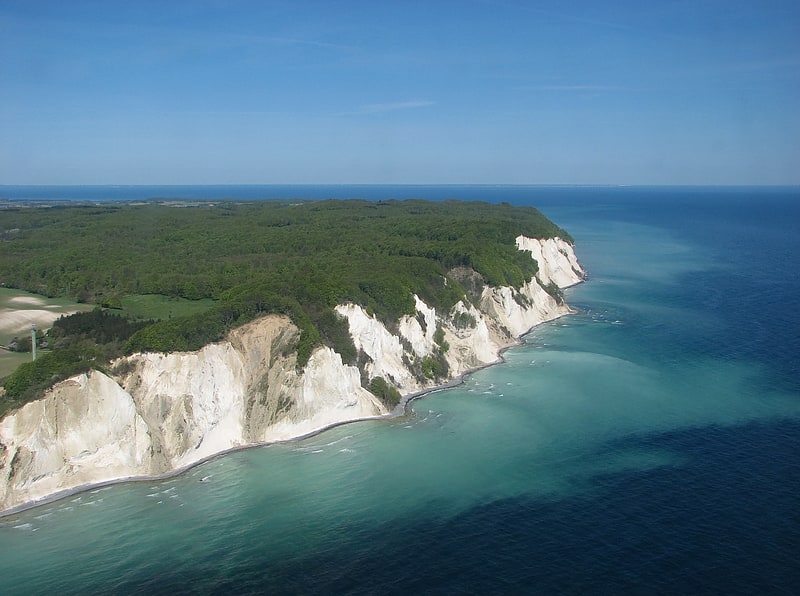
Tourist attraction in Borre, Denmark. Møns Klint is a 6 km stretch of chalk cliffs along the eastern coast of the Danish island of Møn in the Baltic Sea. Some of the cliffs fall a sheer 120 m to the sea below. The highest cliff is Dronningestolen, which is 128 m above sea level. The area around Møns Klint consists of woodlands, pastures, ponds and steep hills, including Aborrebjerg which, with a height of 143 m, is one of the highest points in Denmark. The cliffs and adjacent park are now protected as a nature reserve. Møns Klint receives around 250,000 visitors a year. There are clearly marked paths for walkers, riders and cyclists. The path along the cliff tops leads to steps down to the shore in several locations.
On 29 May 2007, close to the cliff tops, the GeoCenter Møns Klint was opened by Queen Margrethe. The geological museum with interactive computer displays and a variety of attractions for children traces the geological prehistory of Denmark and the formation of the chalk cliffs. The museum was designed by PLH Architects, the winners of an international design competition.[1]
Fanefjord Church
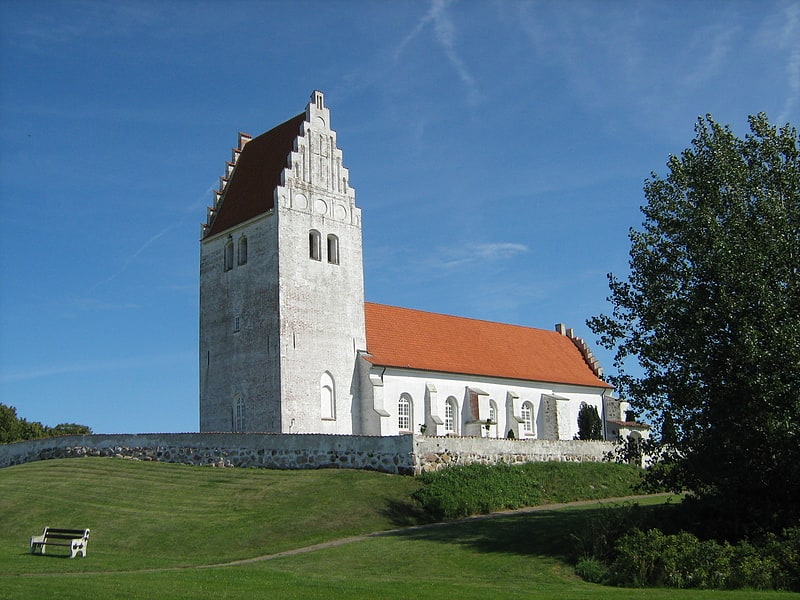
Also known as: Fanefjord Kirke
Protestant church in Denmark. Fanefjord Church is on the Danish island of Møn. It is located in an open setting overlooking the Baltic Sea inlet of Fanefjord between Store Damme and Hårbølle. Standing on the top of a small hill, the church's red-tiled roof and whitewashed walls can be seen from considerable distances, whatever the direction. The interior is of particular historical interest, in view of the many frescos dating back to the 13th and 16th centuries and Fanefjord Church is considered the most famous attraction on Møn.[2]
Address: Fanefjord Kirkevej 51, 4792 Askeby
Elmelunde Church

Also known as: Elmelunde Kirke
Protestant church in Stege, Denmark. Elmelunde Church, famous for its frescos, is located in the village of Elmelunde, Møn, in southeastern Denmark. It stands high above the surroundings just south of the main road from Stege to the white cliffs of Møn. The impressive whitewashed building can be seen from miles around and has been used as a landmark by sailors in the Baltic Sea.[3]
Address: Leonora Christines V 1, Møn
Keldby Church

Also known as: Keldby Kirke
Protestant church in Stege, Denmark. Keldby Church, famous for its frescoes, is located on the main road to Møns Klint in the village of Keldby, 4 km east of Stege on the Danish island of Møn.
The imposing red brick church is one of the three Møn churches decorated with frescos by the Elmelunde Master, probably towards the end of the 15th century. In the Biblia pauperum style, they present many of the most popular stories from the Old and New Testaments. There are also a number of earlier frescoes in the church dating back to about 1275.
The original nave and choir were constructed in the first half of the 13th century. Around 1480, the nave was expanded with cross vaults and the choir was heightened with limestone. The tower was added in the 16th century and a small sacristy was built about 1700.
The richly carved altar triptych and the pulpit are probably from the late 15th century or early 16th century.[4]
Address: Præstegårdsstræde 6, 4780 Stege
Klekkende Høj
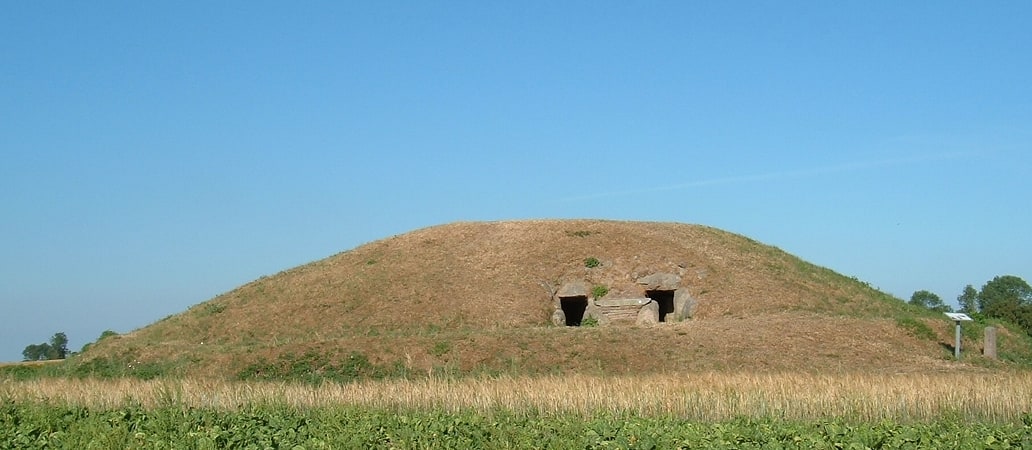
Klekkende Høj is a megalithic tomb on the island of Møn in Denmark. It takes its name from its location near the village of Klekkende. "Høj" stems from the Old Norse word haugr, meaning hill, mound or barrow.[5]
Sømarkedyssen
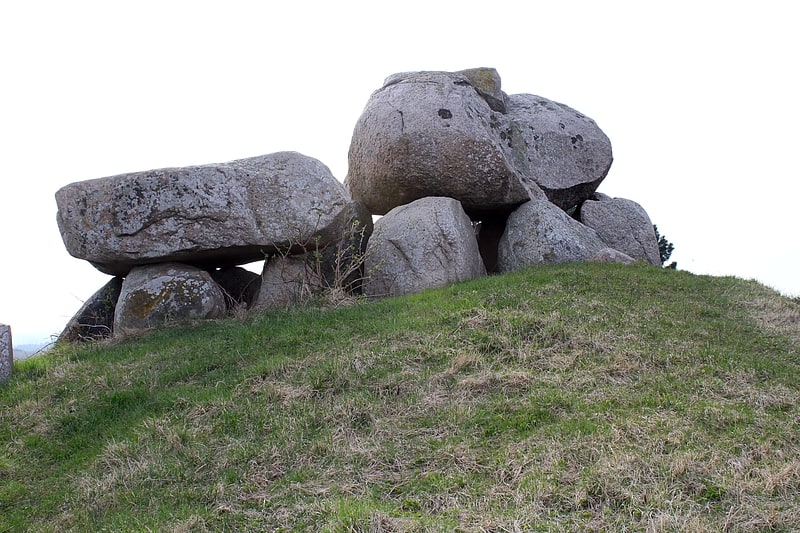
Sømarkedyssen is a neolithic megalithic tomb located near Sømarke on the Danish island of Møn
Dating back to approximately 3400 BC, the tomb consists of an octagonal chamber. A big boulder serves as a capstone, supported by seven load-bearing stones. Leading to the burial chamber, the corridor is covered with a smaller boulder, supported by four stones, whose upper surface has more than 180 bowl-shaped carvings dating from the Bronze Age.[6]
Grønsalen
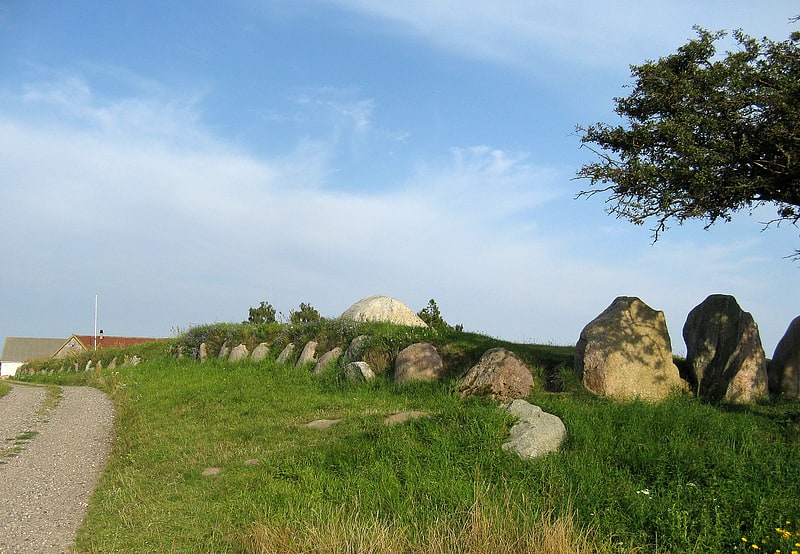
Archaeological site in Denmark. Grønsalen or Grønjægers Høj is located near Fanefjord Church on the Danish island of Møn. Some 100 metres long and 10 metres wide, it is Denmark's largest long barrow and is widely recognised as one of Europe's outstanding ancient monuments.[7]
Kong Asgers Høj
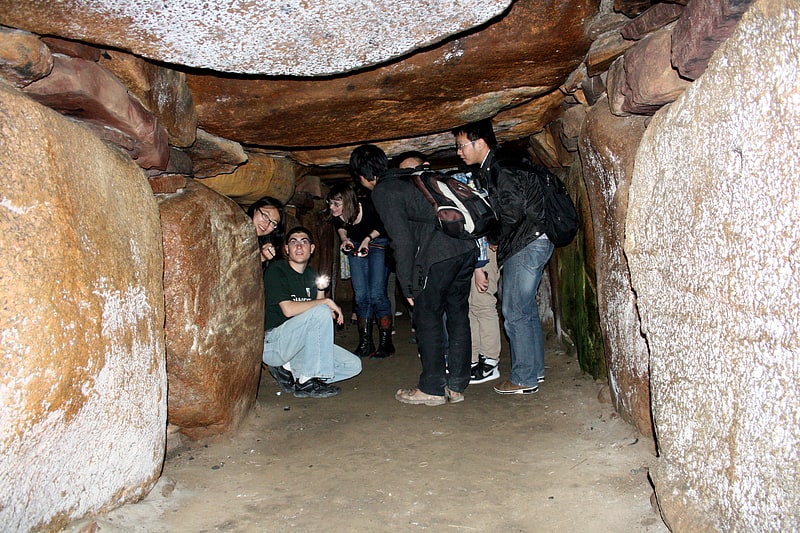
Historical landmark in Stege, Denmark. Kong Asgers Høj is a large passage grave on the island of Møn in Denmark.
The megalithic structure dated to Neolithic Funnel Beaker culture. The grave consists of a chamber (10 m long by 2 m wide) with a long passage (7.5 m long). This type of graves is found primarily in Denmark, Germany and Scandinavia, and occasionally in France and the Netherlands.
Study of King Asger Høj began in 1839, when the Danish merchant Gustav Hage tried to find a treasure, found it empty. The grave is structurally untouched since ancient times, but may have been cleared then. It was used as Secondary burial for Corded Ware culture period.[8]
Marienborg Manor
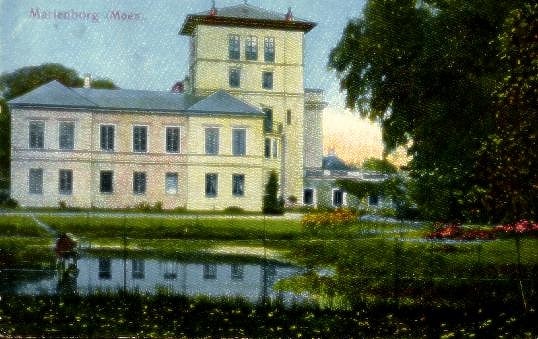
Also known as: Marienborg
Church in Stege, Denmark. Marienborg Manor is an estate on the Danish island of Møn. The estate has a large park with public access. The main building was demolished in 1984. The estate, covering 1,394 ha, contains the thatched tenant farm of Egeløkke. Manorial records exist from 1769, though earlier records may exist in the Møn Cavalry District records.[9]
Klintholm Manor
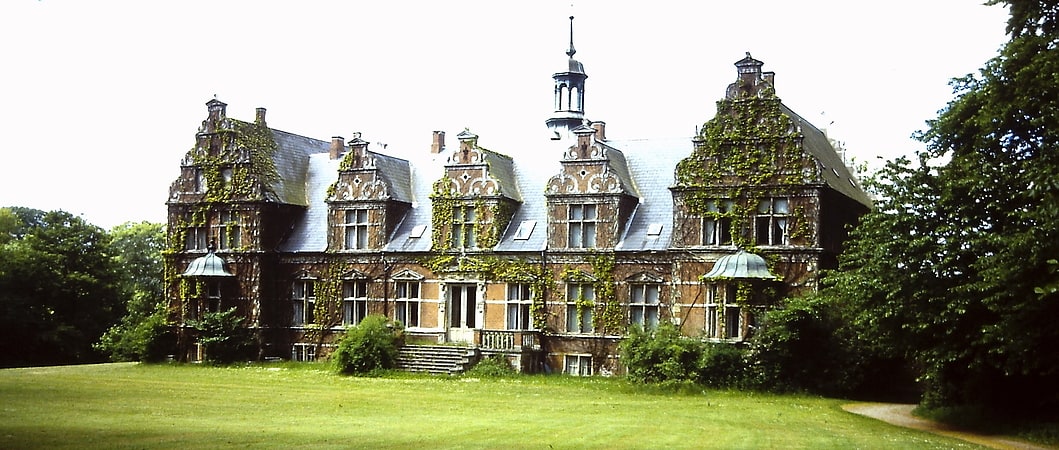
Also known as: Klintholm Gods
Klintholm is an estate near Mons Klint on the Danish island of Møn. Originally owned by the Crown, since 1798 the estate has belonged to the Scavenius family. In 1838, a three-winged stone complex was built by G.F. Hetsch in the Neoclassical style and in 1875, a new manor house designed by August Klein in the Renaissance Revival style was completed but it was demolished in 2000.[10]